Maintaining correct tire inflation pressure is very important since it helps optimize tire performance and fuel economy while over-inflated tires are just as problematic as under-inflated ones.
In fact, driving with under-inflated tires is one of the biggest causes of tire failure, according to the National Highway Traffic Safety Administration.
Besides, under-inflated tires can cause many other problems such as wearing out more rapidly, handling poorly and reducing fuel efficiency.
In addition, over-inflated tires are more susceptible to damage from road irregularities, and this also creates a bumpier ride.
Overfilling your tires is just as dangerous as under-filling them, so it’s important you know what is recommended for your vehicle.
This article will give you everything that you need know about your recommended tire pressure. These include:
Buy Pressure Gauge at Amazon
Recommended tire pressure, where to find it?Since tire pressure is so important to your safety and your car’s overall performance, it is important to know which level of tire pressure is right for your vehicle.
In fact, how much air pressure your tires need depends on several factors, including the type of vehicle, the type of tire and the intended use of the vehicle etc.
Air pressure in tires is measured in pounds per square inch or PSI. You can find your tire pressure both inside your car and on the sidewall of the tire.
How to find recommended tire pressure inside your carYou could find the manufacturer’s optimum or recommended tire pressure for your car on a sticker in the door jam, or in your owner’s manual. Some car models even place the stickers on the trunk lid, in the console or on the fuel door. For best results, look for a placard on the inside of the driver’s door, like the example in the photo below.
How to find maximum tire pressure on the sidewall of your tiresSomewhere on the sidewall of your tire, just below the big, bold letters of the manufacturer, for example, you might have noticed the words ‘Max. Press. 35 PSI.’ (pounds per square inch).
Press. 35 PSI.’ (pounds per square inch).
That number tells you the maximum cold pressure needed for your tire to carry its maximum load.
Most typical tires require about 32 to 35 pounds per square inch (PSI) of air, says Rod Tate, owner of highly rated Colony One Auto Center in Stafford, Texas.
Large trucks require much larger tires with PSIs of 50 to 60. Heavy-duty vehicles can go even higher. For example, tire in the picture below requires 41 pounds per square inch of air.
However, the tire’s maximum pressure is NOT necessarily the most suitable pressure for every vehicle upon which the tire can be used (almost all vehicle manufacturers’ recommended tire inflation pressures are less than the tires’ maximum pressure).
You really should follow the recommended pressure printed somewhere inside your car or in the manual rather than the maximum pressure. In the next section, I will explain why.
Buy Pressure Gauge at Amazon
Why is maximum tire pressure not the best?If you insist on inflating your tires to the max PSI, there will be more likely that two things below will happen
Since tires inflated to the max cannot give as much on the sidewall, you might see superior cornering, but it could be at the risk of your braking threshold. One quick corner and your back end could slide out.
One quick corner and your back end could slide out.
When your tires are inflated too much, the rubber rounds out at the top of the tire when you are driving, and the center will quickly wear out. You will also reduce your traction and you could even cause a blowout.
Therefore, maximum pressure is not the best, rather, recommended pressure is. I need to repeat here that the pressure listed on the sidewall is a maximum pressure only, but not a recommended pressure. Instead, you should use the air pressure recommended in the vehicle’s owner’s manual or tire information placard label.
How to check your tires pressure?Therefore, maximum pressure is not the best, rather, recommended pressure is. I need to repeat here that the pressure listed on the sidewall is a maximum pressure only, but not a recommended pressure. Instead, you should use the air pressure recommended in the vehicle’s owner’s manual or tire information placard label.
Instead, you should use the air pressure recommended in the vehicle’s owner’s manual or tire information placard label.
After knowing the most appropriate pressure for your car tires, you should check whether your tires have such pressure. In addition, checking the pressure of your tires regularly is one of the most important – and most often overlooked – regular maintenance that you should do to ensure your safety and quality of your driving. Monitoring the amount of air in your tires will let you know if you have a small leak and can help you avoid an unexpected flat tire.
Frequently checking your PSI becomes even more important in the fall and winter, when outside temperatures drop and weather conditions fluctuate causing your tires to lose air more quickly. Generally speaking, your tire will gain or lose one PSI for every 10-degree change in temperature, which means if you have a sudden drop of 30 degrees, you could lose three PSI overnight. If your tires were already low, this could cause tire damage, steering problems or even a flat tire.
Some experts recommend that you should check the air pressure every time you refuel; others say once a month is sufficient.
How to check tire pressure properly? Checking tire pressure is easy. You can do it right at home or at the gas station. Just be sure you check the pressure when your tires are cold, or have not been driven in several hours. This will give you the most accurate reading.
The most important piece of equipment you need is an accurate tire pressure gauge. You can find battery-operated digital gauges, or more traditional stick-type gauge found at most gas stations. A good gauge should not set you back more than $15 – a worthwhile investment for a longer life for your tires.
Buy Pressure Gauge at Amazon
Make sure you have your manufacturer’s PSI handy when you are checking your tire pressure, and then follow these steps:

By checking tire pressure once a month, you will get a good idea how they are performing. If your tires are fairly new and continue to leak air, you should consult your dealer or mechanic. You may have a faulty valve or other damage that is difficult to detect which could unfortunately result in the need to replace the tires completely.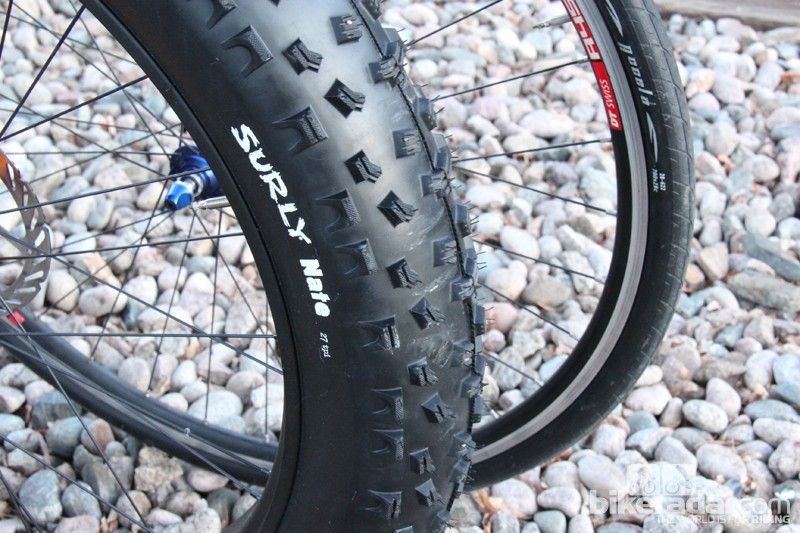 But with proactive maintenance, you could catch an issue before it becomes a problem, and just end up needing a small repair.
But with proactive maintenance, you could catch an issue before it becomes a problem, and just end up needing a small repair.
Often, it is hard to spot an under-inflated tire until it is too late – in other words, it is completely flat. Of course, you could carry a gauge around at all times to measure the pressure, but that is not exactly convenient. Instead, watch for these signs and symptoms of tires that are under-inflated.
When your tires are under-inflated, your ride can be less smooth than usual. You may even find that it takes longer to brake.
When a tire is not inflated properly, it wears down more quickly. If you notice that one or all of your tires are wearing out faster than usual, it may be because they are under-inflated.
Tires that are under-inflated can make your vehicle quiver and shake, which is not a pleasant driving experience.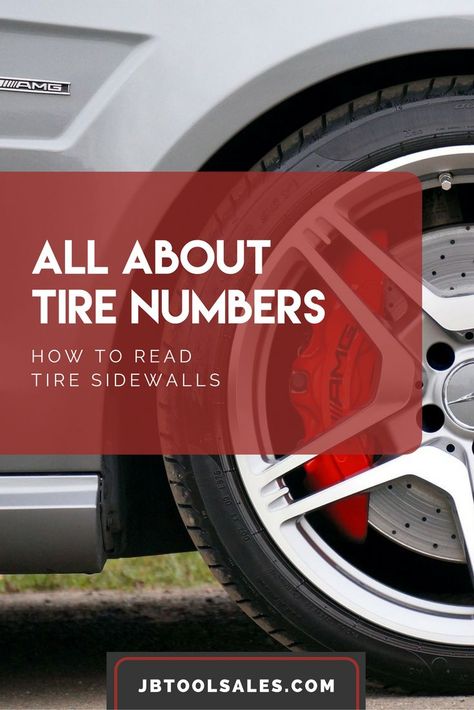 Under-inflation can even cause tires to become misaligned, with comes with it is own variety of problems.
Under-inflation can even cause tires to become misaligned, with comes with it is own variety of problems.
These are all things that you need to know about recommended pressures of your car tires. After reading this article, you will never confuse about the right pressure of your tires and will know how to check it.
Please share your ideas with me if you have other tips for this.
When it comes to driving safety, tire pressure is always one of the hottest topics. Why does tire pressure matter? What the heck is that little annoying symbol on my dashboard? Should I under-inflate my tire during the winter? How often should I check my tire pressure?
We got tons of questions like this from our community, so for today, let's dive deep into the world of tire pressure, put our geeky glasses on and figure out everything you need to know about your tires.
1. What's The Recommended Tire Pressure For My Car?
The recommended tire pressure varies based on the vehicle makes determined by the manufacturer after thousands of tests and calculations. For most vehicles, you can find the ideal tire pressure on the sticker/card inside the driver’s door for newer cars. If there’s no sticker, you can usually find the info in the owner’s manual. Normal tire pressure is usually between 32~40 psi(pounds per square inch) when they are cold. So make sure you check your tire pressure after a long stay and usually, you can do it in the early morning.
For most vehicles, you can find the ideal tire pressure on the sticker/card inside the driver’s door for newer cars. If there’s no sticker, you can usually find the info in the owner’s manual. Normal tire pressure is usually between 32~40 psi(pounds per square inch) when they are cold. So make sure you check your tire pressure after a long stay and usually, you can do it in the early morning.
2. How To Check The Tire Pressure?
After knowing the proper tire pressure of your vehicle recommended by the manufacturer, you should check your tire pressure regularly to make sure that you are in good shape.
You can check your tire pressure in auto part stores, the mechanics, gas stations, and at home. To check tire pressure at home, you need:
As tire pressure changes with the temperature a lot, and recommended tire pressures are cold inflation pressure, you should start with cold tires if possible.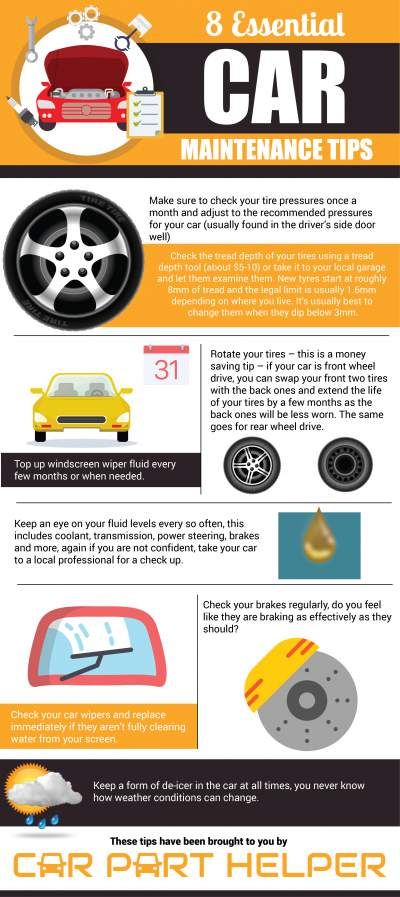 We mostly check the tire pressure after one night's rest to avoid the heat from the friction of the last drive, and before the temperature goes up.
We mostly check the tire pressure after one night's rest to avoid the heat from the friction of the last drive, and before the temperature goes up.
Unscrew the valve cap and press the tire gauge onto the valve stem hard enough until the hissing sound disappears. There should be a reading as long as the gauge is well connected to the tire.
You can then note down the tire pressure of each tire, and compare them with the ideal psi you read from inside your driver’s door or in the owner’s manual. Make sure you read in detail, as for some vehicles, front and rear tires have different recommended psi.
If you find a tire underinflated, use the air compressor to fill your tires. You can either buy an air compressor in the auto parts store or use one in a gas station. Remember to rest your tires for at least half an hour to make sure they’re cold and the reading is accurate. If you have to fill your tires when the tires are hot, inflate them 3~4 psi above the recommended psi, and check again with your gauge when they are cold. It’s ok to overinflate a bit when filling the tires, as you can let the air out with the gauge.
If you have to fill your tires when the tires are hot, inflate them 3~4 psi above the recommended psi, and check again with your gauge when they are cold. It’s ok to overinflate a bit when filling the tires, as you can let the air out with the gauge.
After filling the tires, use your tire pressure gauge to check the tire pressure again and make sure they are in a good range. Let the air out a bit if they are over-inflated by pressing the gauge harder on the valve stem.
3. How To Maintain Proper Tire Inflation?
Tire maintenance is essential for the overall performance of your vehicle, and we highly recommend that you check your tire pressure every time you inflate your tire, each 10°F (5.6 °C) temperature change, and every 30 days.
Be mindful that don’t wait until the TPMS(Tire Pressure Monitoring System) light come on before you check the tire pressure, as the normal TPMS may:
 ..
..For more information about the tire pressure monitoring system, please check our post about TPMS: What is TPMS and Why Does it Matter?
Thus, we highly recommend that you check your tire pressure regularly, especially before a long drive or heavy load driving. Also, temperature affects the tire pressure a lot, and we will explain it in the next section.
4. How Does Temperature Affect Tire Pressure?
First of all, the rule of thumb is for each 10°F (5.6 °C) decrease in temperature, the tire pressure will drop by one psi for most passenger vehicles. When it comes to commercial truck tires, which are often inflated to over 80 psi (twice as much as a passenger vehicle tires), the change of tire pressure according to temperature is doubled to 2 psi for every 10°F.
For the non-nerdy readers, just remember this rule of thumb and keep in mind that you will need to monitor your tire pressure during different seasons or a sudden temperature change.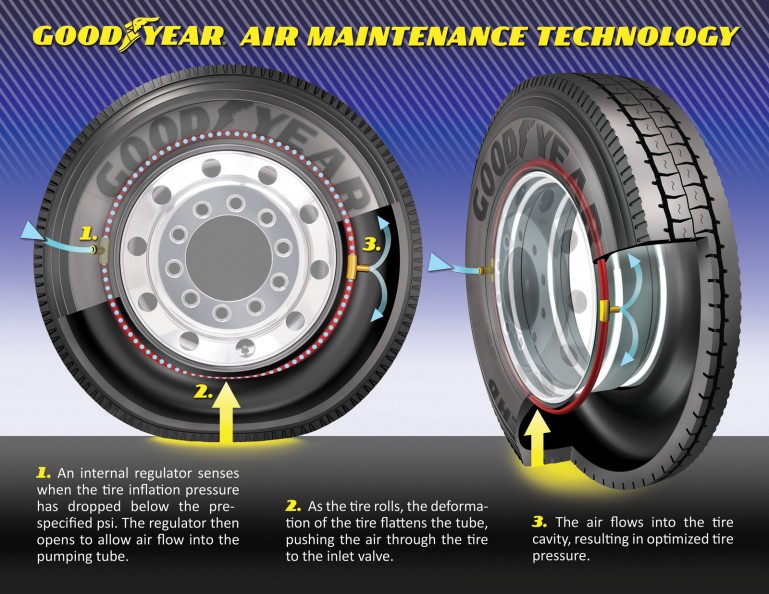 For those who want a deeper dive into how psi's are determined, here's the science behind it.
For those who want a deeper dive into how psi's are determined, here's the science behind it.
The equation we use to calculate the relationship between tire pressure and the temperature is called the Ideal Gas Law. It is a good approximation of the behavior of many gases under many conditions. (Appx1) It works well for most low-pressure gases. When applied to tire pressure calculation, the error is less than 1%.
First, we take the Ideal Gas Law equation and apply it to our circumstance:
where,
P = absolute pressure
V = gas volume in the tire
n = the number of molecules of gas in the tire
R = universal gas constant
T = temperature
Since we are trying to examine the pressure change according to the temperature, let's assume two tire pressures P1 & P2 at their set temperatures T1 & T2.
Given the n and R are both constants, and the gas volume in the tire is also a constant, we can take those constants out of the equation, and suddenly we get this straightforward one:
Let's say the temperature drops from 100°F to 50°F, the tire pressure at 100°F is 35 psi, so what's the tire pressure now at 50°F?
(the metric system is getting in the way, huh?)
Absolute Pressure = tire pressure + sea level air pressure (14.7 psi). So,
Put all that into the equation,
So a 50°F drop in temperature lowers the air pressure by 4.5 psi, which is pretty much the same according to our rule of thumb.
5. How Does Tire Pressure Affect Driving
Both overinflation and underinflation affect your tire performance a lot, and serious problems might occur. According to NHTSA(National Highway Traffic Safety Administration), driving on underinflated tires increases a driver's chance of being in a serious accident by 300%.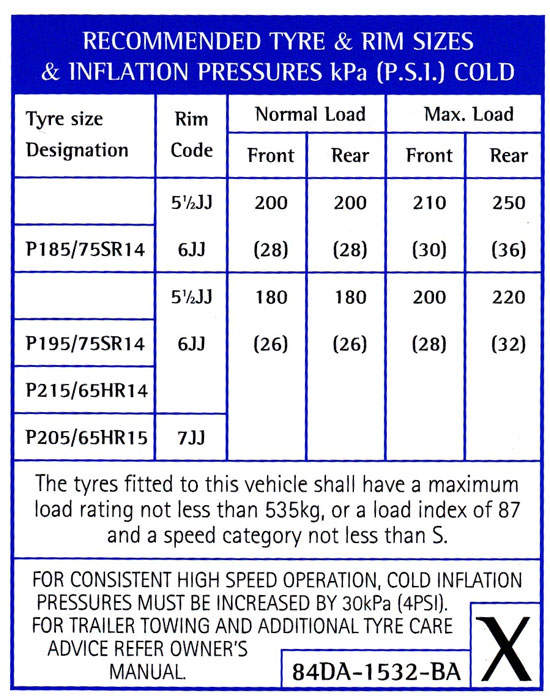 So how will a bad tire pressure affect driving safety? We will explain in detail below.
So how will a bad tire pressure affect driving safety? We will explain in detail below.
The grip is mostly associated with the size of the contact patch between the tire and the road. An over-inflated tire radically decreases the contact patch while an under-inflated tire does the opposite.
A larger contact patch gives you more grip, and this is the exact reason why lots of racers will intentionally decrease their tire pressures to create a larger contact patch on a dry race track.
However, despite the fact that an under-inflated tire will cause more fuel consumption and improper tear and wear of the tires, for most daily commuters, it might cause an even scarier problem, which is hydroplaning.
Hydroplaning is a hazardous event when a layer of water builds between the wheels and the road surface, leading to a loss of traction that prevents the vehicle from responding to control inputs. (Appx2)
Hydroplaning occurs when the pressure of the tire pushing on the ground is equal to the water pushing back up on that tire.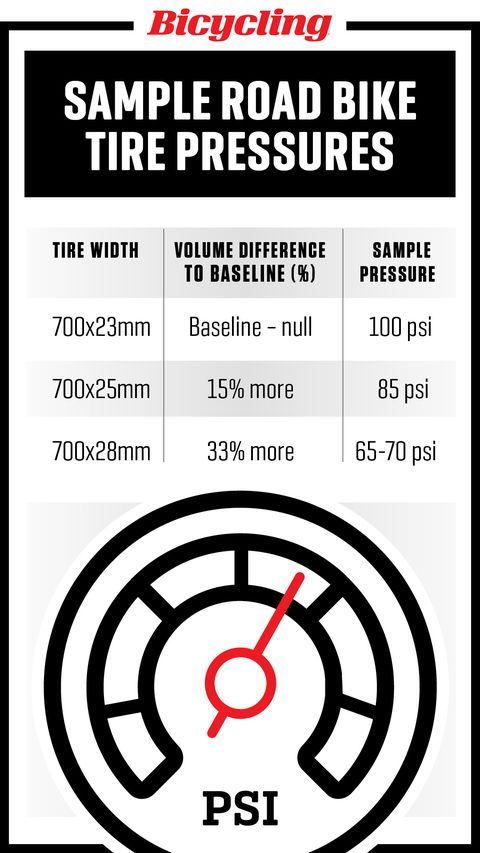 The size of the contact patch, given the force or the weight of the tire, is the same, directly affects the average pressure the tire's putting down on the road. The larger the contact patch (by deflating the tires), the less pressure it puts on that same area. So there's a causal relationship between your tire pressure and the possibility of a hydroplaning event.
The size of the contact patch, given the force or the weight of the tire, is the same, directly affects the average pressure the tire's putting down on the road. The larger the contact patch (by deflating the tires), the less pressure it puts on that same area. So there's a causal relationship between your tire pressure and the possibility of a hydroplaning event.
Here's a more visual explanation of what is happening between a properly-inflated tire and an underinflated tire when driving on a wet road.
To avoid a hydroplaning event, ALWAYS inflate your tires properly. Also, check your tires' treads, which make the water flow around the tires more efficiently, and of course, driving slow is always a big plus.
How tire pressure affects tire wearThe contact patch directly decides the pattern of the tire's wear and tear. You don't want your tires to wear out prematurely just because you have an over or under-inflated tire.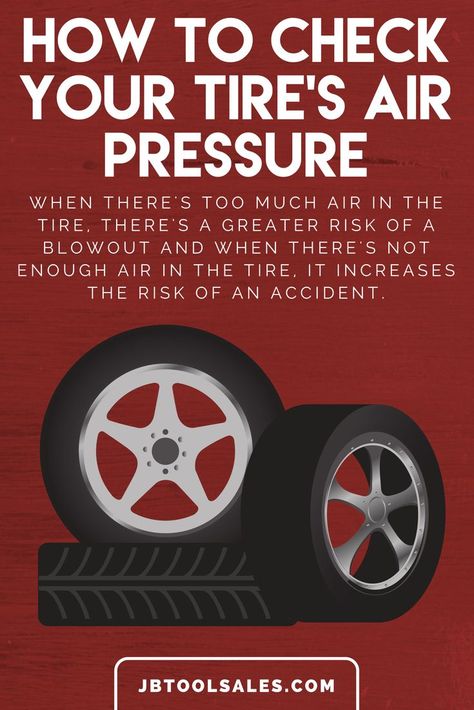
Imagine you are a ball rolling on the ice, there's no friction between the two surfaces, how much extra force do you need to apply to keep the ball moving? Zero (Thanks, Newton). The same applies to your fuel consumption when it comes to driving on the road. The rolling resistance between your tires and the road significantly affects fuel economy, and by now we should all know the logic behind this, lower tire pressure leads to a larger contact patch, which causes higher rolling resistance, and thus, poor fuel economy.
A Michelin study showed that your tire is accountable for at least 1/5 of your total fuel consumption and a 1-bar of pressure drop (14.5 psi) would increase your fuel consumption by 3-5%.
6. Special Conditions For Tire Pressure Manipulation
There are of course circumstances where you want to manipulate your tire pressure to meet specific requirements. Like the aforementioned track race, or if you are driving on sand, mud, etc. However, as a daily commuter, we strongly suggest you regularly check your tire pressure, preferably once a week and anytime you might take a long road trip, and always keep the tires properly inflated!
Like the aforementioned track race, or if you are driving on sand, mud, etc. However, as a daily commuter, we strongly suggest you regularly check your tire pressure, preferably once a week and anytime you might take a long road trip, and always keep the tires properly inflated!
Conclusion
Tire pressure is always a hot topic regarding driving safety, and it's important to keep an eye on the tire pressure to maximize fuel efficiency and safety.
Before you go
We'd like to offer you our most popular ZUS Smart Vehicle Health Monitor for FREE to better take care of your car and save $$$ on car expenses. Claim your free unit here.
Top Posts from nonda:
What is a Car Diagnostic Test & How to DIY?
What Does Check Engine Light Mean & How to Fix it?
Best OBD2 Scanner & Code Reader: Complete Buying Guide
OBD2 Codes: What You Need to Know
Appendix 1 - Ideal gas law - Wikipedia.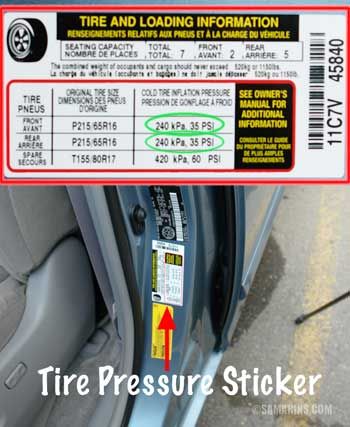
Appendix 2 - Aquaplaning - Wikipedia.
IsSlightly low is not a major problem… say 3– 4 psi low . This is bad for gas mileage, slightly impairs the car's handling in emergency situations, and has a slightly bad effect on tire wear. Really low, like 15 psi, the sidewalls really flex a lot when driving at high speeds.
Likewise, how much is 600 psi? Only from pressure not more than 600 PSI . Failure to do so may result in damage to the coil." A powerful high pressure washer such as the GPW-4000-G can seriously damage the condenser coils, so technicians should use a machine with lower pressure but high flow.
Tire pressure 31 too low? It's too low. Most tire pressure monitoring systems alert you when tire pressure drops by about 10 percent. For you, 10 percent would be just under 30 psi. … So, in your case, I would recommend that you put 35 or 36 psi in tires and just leave it there.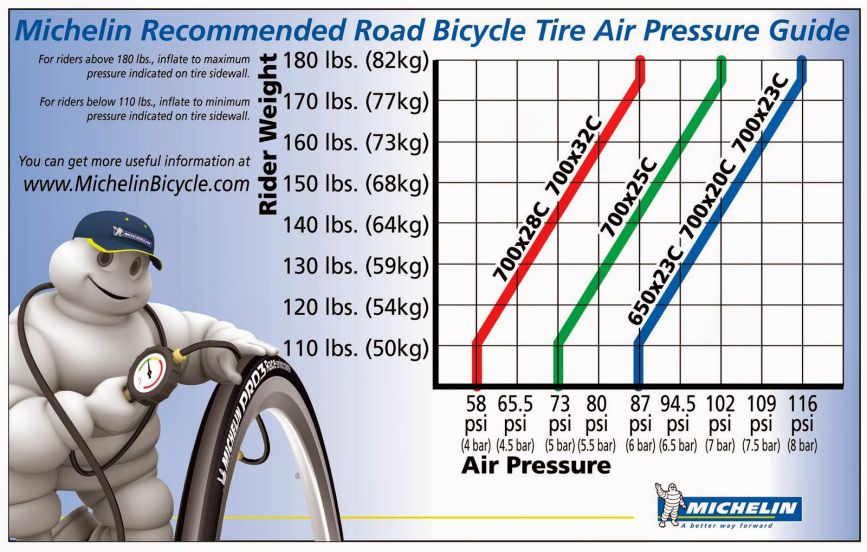
Is 40 psi good for tires? If there is no sticker, information can usually be found in the user manual. Normal tire pressure is typically 32 to 40 psi. (psi) when cold. So be sure to check your tire pressure after a long stay and this can usually be done early in the morning.
Second, is 50 PSI too much for tires? Each tire has nominal maximum inflation pressure. … This means the tire will safely handle up to 1477 pounds. and can be safely inflated to 300 kPa (kilopascal) or 50 psi (psi).
The higher the psi pressure of the pressure washer, the faster the cleaning job. I tested three pressure washers: 1,600, 2,300 and 3,100 psi. There is no doubt that 1,300 to 2,300 psi electric pressure washers can clean a concrete road, but it will take a long time. is longer than .
then 3000 psi is too much for a car? Using 3000 PSI and a 0 degree or 15 degree nozzle of is too much for your car body and there is a good chance you will damage the paint.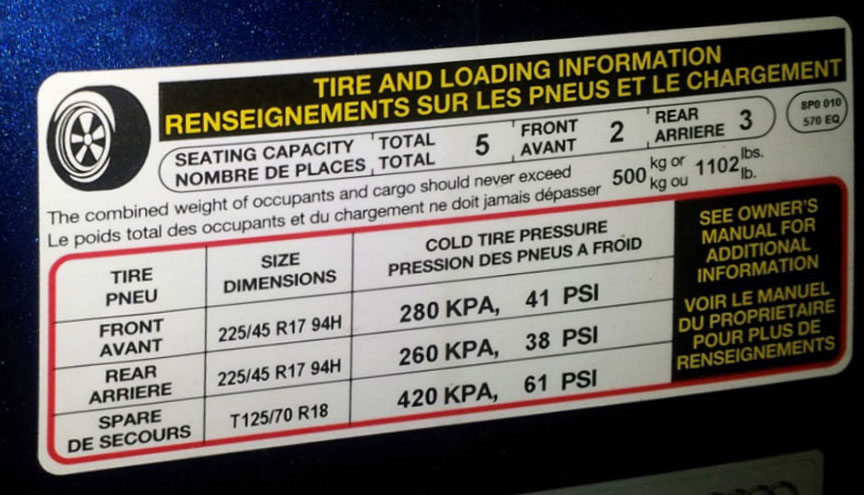
How many pounds per square inch do I need to clean concrete? To effectively clean concrete, use a pressure washer with a pressure rating of at least 3,000 psi and a flow rate of at least 4 gallons per minute (gpm).
Low tire pressure is always more dangerous than high tire pressure . … So, in your case, I would recommend that you set your tire pressure to 35 or 36 psi and just leave it there. You won't notice any difference in tire wear, handling or braking.
Is 30 PSI sufficient for tires? Cars usually require tire pressure 30 to 35 psi (psi). The recommended psi for your vehicle is ideal tire pressure all year round; there are no different numbers for summer or winter. However, temperature affects tire pressure.
What is unsafe tire pressure?
If you have standard car tires (ninety percent of cars), the lowest tire pressure you can normally drive with is 20 psi inch (PSI). Anything below 20 psi is considered a flat tire and puts you at risk for a potentially devastating blowout.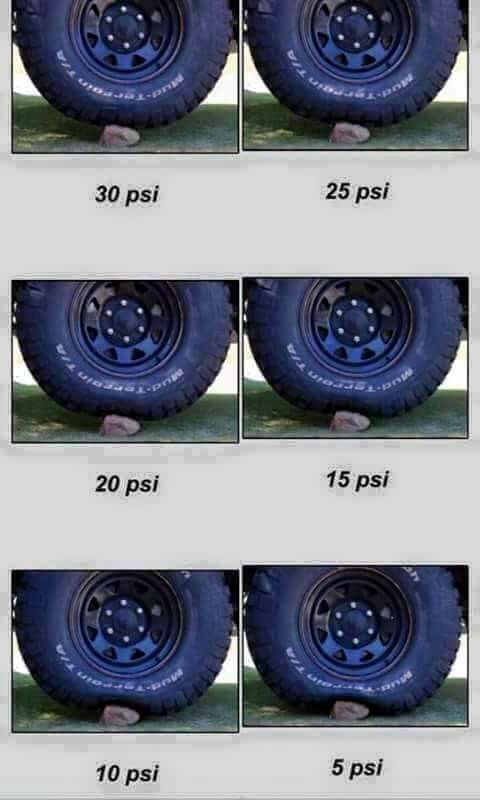
35 psi suitable for tires? Most passenger cars will recommend 32 to 35 psi in tires when they are cold . … Excessive tire pressure will make your ride bouncier and your vehicle handling poor, while under-inflated tires can lead to premature wear due to increased friction.
Standard tire inflates to approximately 30-35 psi. In hot weather and highway conditions, the air temperature inside the tire rises by about 50 degrees. This increases the pressure inside the tire by about 5 psi. Tire burst pressure is about 200 psi .
Why do car dealers over-inflate tires?
Short answer: when they service and change the oil the tires are usually hot . The PSI in your door is for the cold (the car has been sitting all night). If you have hot tires, the pressure will be higher than if you have cold ones. So when they fill the tires, they do so to the appropriate "hot" level.
What tire pressure should I use with 35 tires? For 35″ you must be at Range 28-32 On the road.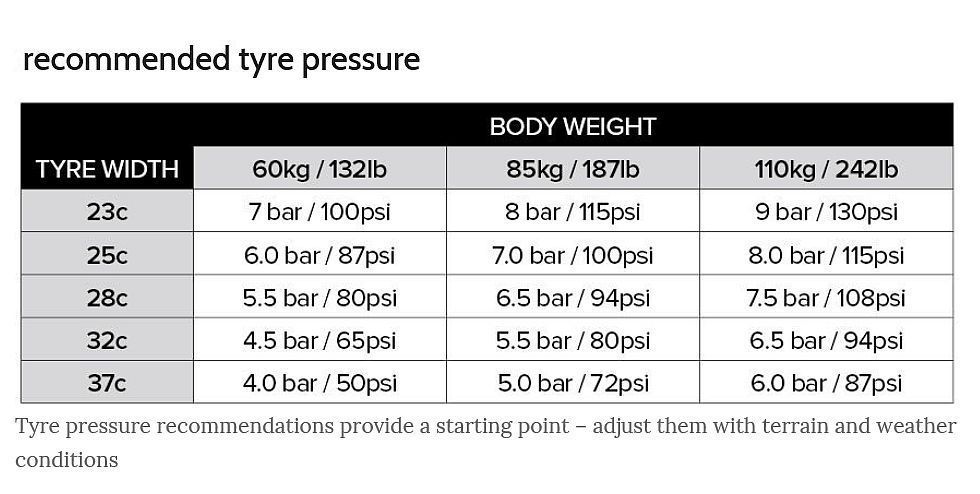
Should I inflate my tires to the maximum PSI? RAY: Under no circumstances should tires be inflated to maximum pressure. . Not only will you risk getting hit, but you will decrease your ability to drive because your handling and braking will be much, much worse.
You can use Dawn 9 Dish Soap0004 in a pressure washer, but you need to properly dilute it with hot water. Take 1 tablespoon of liquid dishwashing detergent and dilute it in 1-1.5 liters of hot water. … Or you want to clean a stubborn stain, but don't have a dedicated pressure washer detergent.
How to spray concrete before pressure washing? Ensure proper cleaning by spraying the concrete with a can of Aerosol Degreaser, keeping 6 inches away from the surface. Apply the degreaser to the concrete using a stiff brush or pressure washer.
What do you apply to your driveway before pressure washing?
 …
… Is a 1400 psi pressure washer suitable? With a pressure of 1.4 psi (pounds per square inch) and a capacity of 1400 gallons of water per minute, the Clean Force 1,400 pressure washer is one of the most powerful pressure washers on the market.
Car washes typically eject fluid at 1,000 to 1,200 psi , although in some situations the pressure can go up to 2.200. For this reason, along with hot wax splashes and towel slaps, we don't recommend walking through a car wash.
Can I wash my car with a pressure washer? No . Of course, many people use a pressure washer to wash their car, but this can do more harm than good. Using a pressure washer can damage or scratch the paint, which can lead to rust.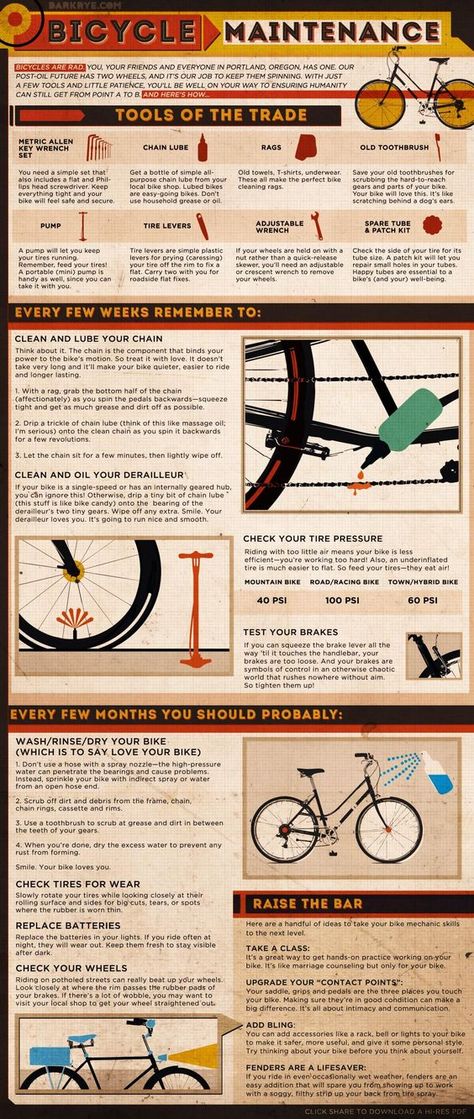 And a car wash usually does a great job, as does a garden hose and a soapy sponge.
And a car wash usually does a great job, as does a garden hose and a soapy sponge.
You may ask how many psi for my carbon road wheels tires.
Another thing is when you get the recommended tire pressure between clincher wheel tires and clincher wheel tires .
Standard tubed clincher tires.
The maximum pressure to use our tube mounted clincher wheels is 120 psi, however we believe the best performance is achieved below 110 psi for all riders. The recommended pressure for clincher tires is slightly higher than for tubeless tires to prevent pinching.
Tubeless
The maximum pressure to use our wheels with tubeless tires is 100 psi, however we believe the best performance is achieved below 100 psi for all riders. The recommended pressure is lower than the clincher to achieve the lowest rolling resistance, and it is clear that pressure flats are not a problem.
The table below shows our recommended tire pressures.
| STANDARD CLINCHER TIRE WITH INNER TUBE | TUBELESS TIRES | |
|---|---|---|
| ≤ 65 KG HEAD | 23 mm - 95/100 psi Inch 25 mm - 90/95 psi Inch 28 mm - 85/90 psi Inch | 23 mm - 90/95 psi Inch 25 mm - 85/90 psi Inch 28 mm - 80/85 psi Inch |
| 65 - 75 KG HEAD | 23 mm - 100/105 psi Inch 25 mm - 95/100 psi Inch 28 mm - 90/95 psi Inch | 23 mm - 90/95 psi Inch 25 mm - 85/90 psi Inch 28 mm - 85/90 psi Inch |
| 75 - 85 KG HEAD | 23 mm - 101/106 psi Inch 25 mm - 96/101 psi Inch 28 mm - 91/96 psi Inch | 23 mm - 95/98 psi Inch 25 mm - 90/95 psi Inch 28 mm - 85/90 psi Inch |
| 85 - 95 KG HEAD | 23 mm - 104/109 psi Inch 25 mm - 99/104 psi Inch 28 mm - 94/100 psi Inch | 23 mm - 95/99 psi Inch 25 mm - 90/95 psi Inch 28 mm - 88/95 psi Inch |
IMPORTANT INFORMATION - Please check and never exceed the maximum recommended tire pressure on the side of the tire.
If you already know your weight and tire size, you can get the recommended tire pressure. See the tire pressure chart to see how many psi( psi ) for your tire below.
A unit of measurement0004 Ever since John Dunlop patented his experimental "pneumatic tire" in 1888, cyclists have been lining up to buy his miraculous invention. The tires were first glued on and then mounted on the rim. It took several years for the automotive industry to accept Dunlop's invention, by which time rubber tires had been extensively researched on bicycles. Larger wheels rolled better than small ones, and thicker tires provided better traction than thinner ones. The fat tires resisted the inevitable evil of punctures, but pedaling wasn't easy. All these contradictions had to be solved by tire companies. In the end, a number of compromises were found. Racers used thin tires with smooth tread and flexible sidewalls, inflated to high pressure, expressed in pounds per square inch (psi). Manufacturers have printed an extremely wide range of minimum and maximum tire pressures on the tire sidewalls - information that was useless to the individual cyclist, but now the old myths have been debunked over the past fifteen years as the MTB industry has closely examined the pressure the individual cyclist requires for the desired combination of stability on road, speed and comfort. The first legend to be destroyed was that thin, high-pressure tires meant speed. Scientific experiments have shown that a rider weighing, say, 155 pounds using 28mm tires at 60 psi will completely outperform his old-fashioned opponent from the 1980s who lost at 120 psi in 20 mm hard surfaces. Tire with lower pressure and larger cross section for superior comfort, road holding, speed and puncture resistance. But what is a hobbyist to do if he or she wants to find the optimum pressure for a particular tire? There are many easy-to-use applications for calculating tire pressure on the Internet. Enter your exact weight, the diameter of the tire you are using, then press CALCULATION . You can calculate your bicycle tire pressure here. A petite lady weighing about 110 pounds will be told to use fatbike tires at just under 20 psi. And the 200-pound bruiser will get a 130-psi recommendation for its 23mm road tires. Please note that these numbers require fine tuning. Use this approximate psi value as a starting point and experiment using more or less 5 psi until the process produces the desired pressure.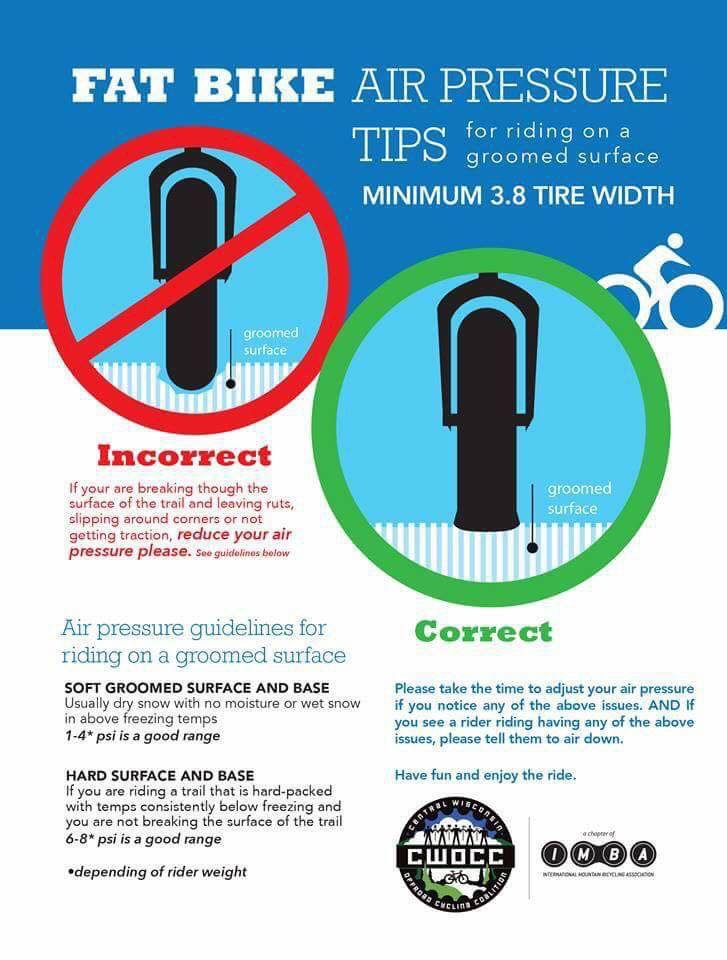 Butcher Boy needed fat tires for puncture protection at lower pressures and long life when carrying heavy loads. The postman's bike was somewhere in between the two extremes. And a number of myths have arisen based on tire pressure.
Butcher Boy needed fat tires for puncture protection at lower pressures and long life when carrying heavy loads. The postman's bike was somewhere in between the two extremes. And a number of myths have arisen based on tire pressure.  These days, professional road builders ride tires, sometimes even 30mm wide, that are suitable for the surface they will be racing on. And they do so under pressure determined by their own weight—or the weight of the bike and rider combined.
These days, professional road builders ride tires, sometimes even 30mm wide, that are suitable for the surface they will be racing on. And they do so under pressure determined by their own weight—or the weight of the bike and rider combined. 